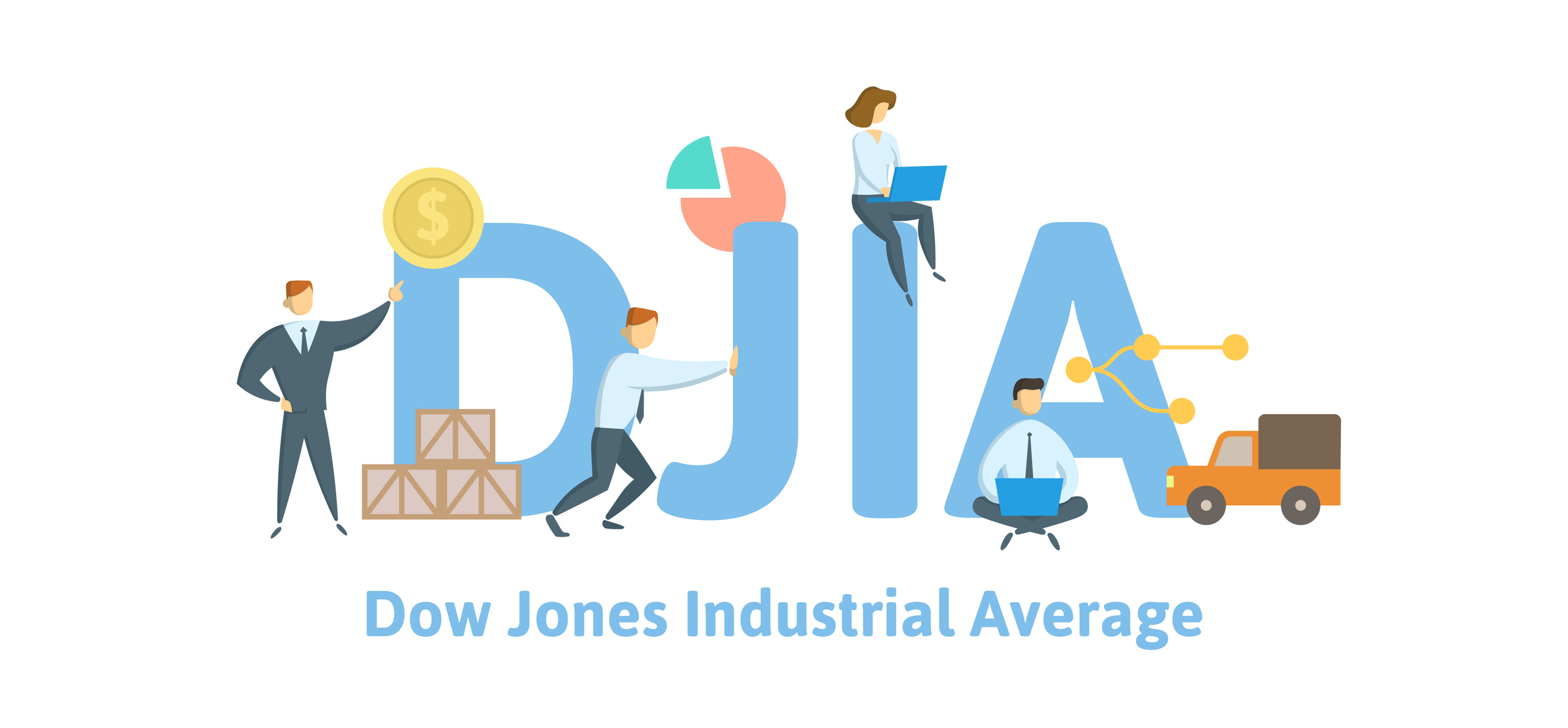The Dow Jones ETF aims to replicate the performance of the Dow Jones Industrial Average, also known as DJIA or the Dow. The Dow includes 30 premium domestic stocks and is considered a primary benchmark of U.S. financial markets.
Currently, the only ETF option is the SPDR Dow Jones Industrial Average ETF Trust (DIA -0.36%). Let's explore the key characteristics of this ETF so you can decide if it's right for you.
SPDR Dow Jones Industrial ETF Trust

NYSEMKT: DIA
Key Data Points
Take a look at the fund's key facts (data is as of Oct. 30, 2025):
- Average annual fund growth since inception (1998): 8.94%
- Average annual growth of the Dow since fund inception: 9.09%
- Gross expense ratio: 0.16%
- Number of holdings: 30
- Weighting methodology: Price-weighted
- Issuer: State Street Global Advisors Trust Company
Although there are other exchange-traded funds (ETFs) that use the Dow in some form, this SPDR ETF is the only pure Dow tracker. The ETF holds all 30 Dow stocks in the same proportion as the index. When the Dow rises, the fund should follow, with only a slight lag related to fund expenses.
You can see this in the performance numbers. Since 1998, the fund has slightly underperformed the index. This difference is called "tracking error." In well-managed funds, the largest component of tracking error should be the fund's expense ratio.

Dow vs. S&P 500
The Dow is often quoted alongside the S&P 500, another large-cap index that is also investable via ETFs. The main difference between these indexes is that the Dow is more concentrated than the S&P 500 and weights its holdings differently.
- Concentration. The Dow includes 30 sector-diversified stocks. The S&P 500 is also sector-diversified, but it includes 500 companies. Because the Dow's portfolio is smaller, each stock has greater influence over the group's cumulative performance.
- Weighting. The Dow sizes each position by the stock's relative share price. In other words, a stock with a $200 share price is held in larger proportions than a stock with a $100 share price. The S&P 500 weights constituents by market capitalization, which is the total value of a company's outstanding shares.
Another factor to consider is the cost of investing in each index. The SPDR Dow fund has an expense ratio of 0.16%, but there are S&P 500 ETFs with expense ratios less than 0.10%. A lower expense ratio allows more of the underlying investment returns to flow through to your bottom line.
Table of holdings
Here are the SPDR Dow Jones Industrial Average ETF Trust's holdings as of Oct. 30, 2025:
| Name and ticker | Current price | Market cap | Industry |
|---|---|---|---|
| Goldman Sachs Group (NYSE:GS) | $876.58 | $262.9 billion | Capital Markets |
| Caterpillar (NYSE:CAT) | $594.36 | $278.1 billion | Machinery |
| Microsoft (NASDAQ:MSFT) | $491.69 | $3.7 trillion | Software |
| Home Depot (NYSE:HD) | $345.27 | $343.7 billion | Specialty Retail |
| American Express (NYSE:AXP) | $363.91 | $250.7 billion | Consumer Finance |
| Sherwin-Williams (NYSE:SHW) | $321.14 | $79.6 billion | Chemicals |
| Visa (NYSE:V) | $326.50 | $625.0 billion | Diversified Financial Services |
| UnitedHealth Group (NYSE:UNH) | $323.60 | $293.1 billion | Healthcare Providers and Services |
| International Business Machines (NYSE:IBM) | $310.21 | $290.2 billion | IT Services |
| JPMorgan Chase (NYSE:JPM) | $300.24 | $818.1 billion | Banks |
| McDonald's (NYSE:MCD) | $310.79 | $221.3 billion | Hotels, Restaurants and Leisure |
| Amgen (NASDAQ:AMGN) | $313.85 | $169.0 billion | Biotechnology |
| Apple (NASDAQ:AAPL) | $277.18 | $4.1 trillion | Technology Hardware, Storage and Peripherals |
| Travelers Companies (NYSE:TRV) | $278.06 | $62.3 billion | Insurance |
| Salesforce (NYSE:CRM) | $261.00 | $248.5 billion | Software |
| Amazon (NASDAQ:AMZN) | $227.92 | $2.4 trillion | Multiline Retail |
| Nvidia (NASDAQ:NVDA) | $184.83 | $4.5 trillion | Semiconductors and Semiconductor Equipment |
| Honeywell International (NASDAQ:HON) | $190.17 | $120.7 billion | Industrial Conglomerates |
| Boeing (NYSE:BA) | $200.37 | $152.3 billion | Aerospace and Defense |
| Johnson & Johnson (NYSE:JNJ) | $199.96 | $481.8 billion | Pharmaceuticals |
| 3M (NYSE:MMM) | $165.09 | $87.7 billion | Industrial Conglomerates |
| Chevron (NYSE:CVX) | $148.49 | $299.0 billion | Oil, Gas and Consumable Fuels |
| Procter & Gamble (NYSE:PG) | $139.63 | $326.3 billion | Household Products |
| Walt Disney (NYSE:DIS) | $107.03 | $191.1 billion | Entertainment |
| Walmart (NASDAQ:WMT) | $115.06 | $917.0 billion | Food and Staples Retailing |
| Merck (NYSE:MRK) | $96.89 | $240.5 billion | Pharmaceuticals |
| Cisco Systems (NASDAQ:CSCO) | $79.47 | $314.2 billion | Communications Equipment |
| Coca-Cola (NYSE:KO) | $70.09 | $301.5 billion | Beverages |
| Nike (NYSE:NKE) | $63.33 | $93.6 billion | Textiles, Apparel and Luxury Goods |
| Verizon Communications (NYSE:VZ) | $40.14 | $169.2 billion | Diversified Telecommunication Services |
Is investing in this Dow Jones ETF right for you?
The SPDR Dow Jones Industrial Average Trust may be a good choice if you're looking for an ETF with domestic large-cap stocks. The fund's holdings could balance out a portfolio that already contains mid-cap stocks, small-cap stocks, and an allocation to foreign companies.
Here are the benefits of the SPDR Dow Jones Industrial Average Trust:
- Invests in blue chip stocks. The Dow Jones tracks established companies with long track records of success. Because of the quality of its holdings, this Dow Jones ETF is one of the safer ways to invest in the stock market.
- Provides some diversification. Even though it doesn't have hundreds of stocks, this ETF invests in companies across a range of market sectors. It has some of the top financial companies, information technology companies, industrial companies, and consumer discretionary companies, among others.
- Pays dividends. While there are plenty of dividend ETFs that pay more, the SPDR Dow Jones Industrial Average Trust has a reasonable dividend yield.
Related investing topics
However, this Dow Jones ETF also has a few notable drawbacks:
- Only invests in 30 companies. This might not be the right ETF if you want a highly diversified fund for your portfolio or one that tracks the U.S. stock market. In those situations, an S&P 500 ETF or a total stock market ETF would be more appropriate.
- Uses a price-weighted methodology. Share prices don't necessarily indicate which stocks deserve a greater allocation, especially since some companies conduct stock splits to keep their share prices from getting too high.
- Chooses companies by committee. A committee decides which companies to add and subtract from the Dow. There is some selection criteria, but it's not as clear-cut as, for example, the companies that are in the S&P 500.
Like most sound investments, this fund is best held for the long term. Buy-and-hold investing is the simplest way to build sustainable wealth, too. So, plan on committing to the long haul to see real results.
